Gusii People / Kisii and their Culture in Kenya
Who are the Gusii People in Kenya? Modernly known as the kisii people are Bantu together with the Kamba, Meru and Kikuyu. They speak the language of Kisii or as commonly known as ekegusii among the native speakers.
The Meru in Eastern province are closely related to the Kisii or Gusii people in language and culture.
Kisii is mainly known for the kisii soapstone which are curved into many items and later sold to tourist.
They live on the western highlands east of Lake Victoria. Since they are a smalll group, they experience greate pressure from the surounding Nilotic speaking community and in most cases they lose their land.
For instance; after migrating to the Mt. Elgon area around 15th century, the Gusii were gradually pushed south by the advancing Luo, and over the next couple of centuries came in conflict with the Maasai and the Kipsigis. They finally settled on the hills here as the high places were easier to defend.
The Kisii are regarded as one of the most economically active communities in Kenya, blessed with rolling tea estates, coffee, and banana groves.
However, Kisii district has a very high population density. It is one of the most densely populated areas in Kenya (after Nairobi, Mombasa and kisumu cities), and the most densely populated rural area.
The Gusii family typically consists of a man, his wives and their married sons, all living together in a single compound. Large families serve two purposes: with high infant mortality rates, the survival of the family is assured and the large numbers facilitate defence of the family enclosure.
Initiation ceremonies are performed for both boys and girls and rituals accompany all important events. Death is considered not to be natural but the work of ‘witchcraft’. The Gusii were primary cattle keepers but also paracticed some crop cultivation, and millet beer was often important at big occassions.
As is the case with many of kenya’s ethnic groups, medicine men (abanyamorigo) had a highly previledged and respected position. Their duty was to maintain the physical and mental wellbeing of the group doctor and social worker combined. One of the more bizarre practices was (and still is) the removal of skull or spine to aid maladies such as backache or concussion.
The Gusii – Kisii inhabit an area in the western highlands east of Lake Victoria. The area is dominated by Nilotic-speaking groups with just this pocket of the Bantu-speaking Gusii.
Being a relatively small group, the Gusii were always on the move following influxes of other groups into their existing lands.
After migrating to the Mt Elgon area sometime before the 15th century, the Gusii were gradually pushed south by the advancing Luo, and over the next couple of centuries came into conflict with the Maasai and the Kipsigis.
They finally settled in the hills here as the high ridges were easier to defend. Having fought hard for their autonomy, the Gusii were unwilling to give it up to the British and suffered heavy losses in conflicts early this century. Following these defeats, the men were conscripted in large numbers into the British army.
The Gusii family typically consists of a man, his wives and their married sons, all living together in a single compound. Large families serve two purposes: with high infant mortality rates the survival of the family is assured, and the large numbers facilitate defence of the family enclosure. Initiation ceremonies are performed for both boys and girls, and rituals accompany all important events.
Death is considered not to be natural but the work of ‘witchcraft’. The Gusii were primarily cattle keepers but also practised some crop cultivation, and millet beer was often important at big occasions.
As is the case with many of Kenya’s ethnic groups, medicine men (ubanyamorigo) had a highly privileged and respected position. Their duty was to maintain the physical and mental wellbeing of the group — doctor and social worker combined. One of the more bizarre practices was (and still is) the removal of sections of the skull or spine to aid maladies such as backache or concussion.
At the end of the 1700s, Bantu-speaking peoples were scattered in small pockets at the northern, southern, and eastern margins of the Kisii highlands and in the Lake Victoria basin. Around 1800, the highlands above 4,970 feet (1,515 meters) were probably uninhabited from the northern part of the Manga escarpment south to the river Kuja.
At that time, the lowland savannas (grasslands) were settled by large numbers of farmer-herders who were ancestors to present-day Luo and Kipsigis. These farmer-herders displaced the smaller Bantu groups from their territories on the savanna.
The Gusii settled in the Kisii highlands; other related groups remained along the Lake Victoria Basin or, as the Kuria, settled in the lower savanna region at the Kenya-Tanzania border.
The British invaded these lands and established a colonial government in 1907, declaring themselves rulers. Native peoples initially responded with armed resistance, which ceased after World War I (1914–18).
Unlike the situation in other highland areas of Kenya, the Gusii were not moved from their lands. The seven subdivisions of Gusiiland were converted into administrative units under government-appointed chiefs.
Missions were established to attempt to convert Gusii from their indigenous (native) beliefs to Christianity. This mission activity was not initially very successful, and several missions were looted.
After Kenyan independence in 1963, schools were built throughout Gusii lands, roads were improved, and electricity, piped water, and telephones were extended to many areas.
By the 1970s, a land shortage had begun to make farming unprofitable. Since that time, education of children to prepare them for off-farm employment has become a priority.
LOCATION OF THE KISII PEOPLE OF KENYA
Gusiiland is located in western Kenya, about 30 miles (50 kilometers) east of Lake Victoria. Abundant rainfall and very fertile soils have made Gusiiland one of the most productive agricultural areas in Kenya.
Between 70 and 80 percent of the land can be cultivated. Since 1989, the Gusii as a single ethnic group have occupied the Kisii and Nyamira districts of southwestern Kenya.
The area is a rolling, hilly landscape on a plain reaching altitudes of 3,900 feet (1,190 meters) in the far northwestern corner of the territory, and 6,990 feet (2,130 meters) in the central highlands. Average maximum temperatures range from 83° F (28.4° C) at the lowest altitudes to73° F (22.8° C) at the highest elevations.
The average minimum temperatures are 61.5° F (16.4° C) and 50° F (9.8° C) respectively. Rain falls throughout the year with an annual average of 60 to 80 inches (150 to 200 centimeters). In the nineteenth century, much of present-day Gusiiland was covered by moist upland forest. Today, all forest has been cleared, very little indigenous (native) plants remain, and no large mammals are found.
In 1989, the number of Gusii was 1.3 million. The Gusii are one of the most rapidly growing populations in the world, increasing by 3 to 4 percent each year. The average woman bears close to nine children, and infant mortality (the proportion of infants who die) is low for sub-Saharan Africa (about 80 deaths per 1,000 live births).
LANGUAGE OF THE KISII PEOPLE OF KENYA
 LANGUAGE OF THE KISII PEOPLE OF KENYA
LANGUAGE OF THE KISII PEOPLE OF KENYAThe Gusii language, Ekegusii, is a Western Bantu language. It is common to name a child after a deceased person from the father's clan for the first name, and one from the mother's clan for the second name. Children may also be named for a recent event, such as the weather at the time of the child's birth. Some common names refer to the time of migrations. For example, the woman's name Kwamboka means "crossing a river."
Talking about personal feelings is prohibited. Hence, questions about a person's mental state are answered with statements about physical health or economic situation.
FOLKLORE OF THE GUSII /KISII PEOPLE OF KENYA
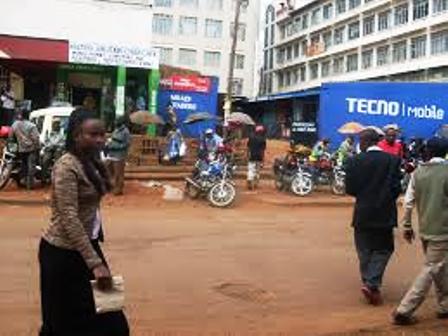 FOLKLORE OF THE GUSII /KISII PEOPLE OF KENYA
FOLKLORE OF THE GUSII /KISII PEOPLE OF KENYAGusii oral tradition contains a number of prominent figures linked with historical events, especially migrations into the current homeland and the arrival of the British. These prominent folk figures are usually men, but a few are women.
Nyakanethi and her stepson Nyakundi are two historical figures linked to the establishment of a densely populated area, the Kitutu.
Nyakanethi and Nyakundi fortified themselves in the highlands to the north and gave shelter to families who fled attacks by neighboring peoples. These families were given a home in Kitutu with Nyakundi as their chief.
Other heroes are related to the establishment of the colonial administration. The prophet Sakawa, who was born in the 1840s and died around 1902, is reported to have predicted the arrival of the British in 1907 and the building of the district capital, Kisii Town.
In 1907–08, a prophetess called Muraa tried to start a rebellion against the British. In 1908 she gave her stepson, Otenyo, medicines that she believed could protect him from bullets, and she sent him to kill British Officer G.A.S. Northcote.
Although Otenyo wounded Northcote with his spear, he survived and later became the governor of Hong Kong.
RELIGION OF THE GUSII /KISII PEOPLE OF KENYA
Before Christianity was introduced to the Gusii, they believed in one supreme god who created the world but did not interfere directly in human affairs. Instead, interference was caused by ancestor spirits (ebirecha), witches, and impersonal forces.
The Gusii believed that displeased ancestor spirits were responsible for disease, the death of people and livestock, and the destruction of crops.
Today, most Gusii claim to be followers of some form of Christianity. A Roman Catholic mission was first established in 1911 and a Seventh Day Adventist mission in 1913. There are four major denominations in Gusiiland: Roman Catholic, Seventh-Day Adventist, Swedish Lutheran, and the Pentecostal Assemblies of God.
Although churches are very active, some non-Christian beliefs continue to influence the lives of most Gusii. If afflicted by misfortune, many Gusii visit a diviner (abaragori) who may point to displeased spirits of the dead and prescribe sacrifice.
In addition to abaragori, who are usually women, various healers also exist. Abanyamoriogi (herbalists) use a variety of plant mixtures for medicines.
Indigenous surgeons (ababari) set fractures and treat backaches and headaches through trepanation (needles). Professional sorcerers (abanyamosira) protect against witchcraft and retaliate against witches.
Omoriori, the witch smeller, finds witchcraft articles hidden in a house. Witches (omorogi) can be men or women, but are usually women. They are believed to dig up recently buried corpses to eat the inner organs and use body parts for magic. Among the Gusii, witchcraft is believed to be a learned art handed down from parent to child.
MAJOR HOLIDAYS OF THE GUSII /KISII PEOPLE OF KENYA
Only the national holidays of Kenya are celebrated (see article on "Kenyans" in this chapter).
RITES OF PASSAGE OF THE GUSII /KISII PEOPLE OF KENYA
The most important Gusii ceremonies are associated with initiation and marriage. Initiation involves genital surgery for both sexes: clitoridectomy for girls and circumcision for boys.
The ceremony is supposed to train children as social beings who know rules of shame (chinsoni) and respect (ogosika).
Girls are initiated at the age of seven or eight, and boys a few years later. Initiations are gender-segregated, and the operations are performed by female and male specialists. Afterward, there is a period of seclusion for both genders.
Funerals take place at the dead person's homestead, and a large gathering is a sign of prestige. Christian elements, such as catechism-reading and hymn-singing, are combined with the traditional practices of wailing, head-shaving, and animal sacrifices.
Before burial, the corpse is dissected in order to determine whether death was caused by witchcraft. The Gusii tend to fear the spirit of a dead person. They believe the dead person may be angry for having died and may punish survivors. Therefore, sacrifices must be made to the spirit of the dead person to appease it.
RELATIONSHIPS OF THE GUSII /KISII PEOPLE OF KENYA
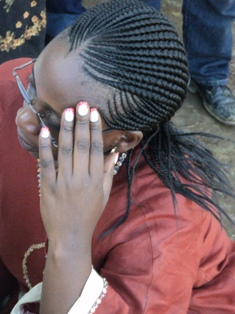 RELATIONSHIPS OF THE GUSII /KISII PEOPLE OF KENYA
RELATIONSHIPS OF THE GUSII /KISII PEOPLE OF KENYADaily interactions follow strict rules of politeness. There are rules for avoiding sexual shame (chinsoni) and rules governing respect (ogosika). These rules are many and complicated. They regulate proper behavior between women and men, between generations, and between different kinds of relatives.
For example, although anyone within the same generation may joke with each other and talk about sexual matters, this is prohibited between different generations.
A father may not set foot in his son's house; a son-in-law has to avoid his mother-in-law; a daughter-in-law must not come too close to her father-in-law (she cannot even cook a meal for him).
In everyday interaction, the expected behavior is one of respect and deference by young people toward older people as well as by women toward men.
The Gusii are very careful about personal appearance and avoid showing themselves even partially naked.
Similarly, bodily functions must not be mentioned or implied between different generations or between women and men. It is important to avoid being seen on the way to the lavatory.
A Gusii person distinguishes her or his own father and mother by specific terms: tata (own father) and baba (own mother). Likewise, parents distinguish their children as momura one (own son) and mosubati one (own daughter).
However, all women and men of the same generation are considered "brothers" and "sisters." All women and men in one's parents' generation are called tatamoke (small father) and makomoke (small mother).
All members of the next generation are omwana one (my child), grandchildrens' generation are omochokoro (my grandchild), and grandparents' generation are sokoro (grandfather) and magokoro (grandmother).
Hospitality and respect toward strangers is common. At the same time, the Gusii are very reserved, polite, and in many ways suspicious about others' intentions. Although interpersonal conflicts are common, people are not supposed to show outwards signs of anger. The strong emphasis on peaceful conduct and emotional control can result in explosions of violent behavior under the influence of alcohol.
One always greets strangers as well as acquaintances of one's own generation with a simple phrase similar to our "Hi, how are you?" (Naki ogendererete).
However, when visiting a homestead or meeting a relative, a more complete greeting ritual is necessary. This includes asking about each other's homes, children, and spouses. Unannounced visiting is not considered polite; a message should be delivered before a visit.
Body language is reserved and gesturing is kept to a minimum. Between people of unequal status, such as young and old or woman and man, the person of lower status is not supposed to look directly into the other's eyes.
Interactions between unmarried young people were once strictly regulated. Today, young men and women meet and socialize in many places outside the home. Premarital sex is common, and many girls end up as single mothers. Young people write love letters to each other, and in general subscribe to Western ideas of love.
LIVING CONDITIONS OF THE GUSII /KISII PEOPLE OF KENYA
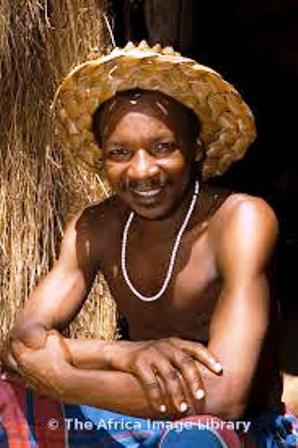 LIVING CONDITIONS OF THE GUSII /KISII PEOPLE OF KENYA
LIVING CONDITIONS OF THE GUSII /KISII PEOPLE OF KENYABefore British colonization, the Gusii lived in two separate groups: the homestead (omochie)— where a married man, his wives, and their unmarried daughters and uncircumcised sons lived, and the cattle camps (ebisarate) in the grazing areas—where most of the cattle were watched by resident male warriors.
A homestead consisted of wives' houses, houses for circumcised boys, and possibly a small day hut for the husband. Married men did not have their own house for sleeping, but alternated between their wives' houses.
A compound had several elevated granaries for millet. The traditional Gusii house (enyomba) was a round, windowless structure made of a framework of thin branches with dried mud walls and a conical thatched roof.
Today, the Gusii continue to live in dispersed homesteads in the middle of farm holdings. Modern houses are rectangular, with thatched or corrugated iron roofs. Cooking is done in a separate building.
FAMILY LIFE OF THE GUSII /KISII PEOPLE OF KENYA
Mothers are ultimately responsible for the care and raising of children. However, they delegate many childrearing tasks to other children in the family. Fathers take very little part in child rearing.
Grandparents play a supportive role and are supposed to teach grandchildren about proper behavior and about sexual matters. Mothers seldom show physical or verbal affection to children. Children stop sleeping in their mother's house when they are still very young.
Marriage is established through the payment of bride wealth (in the form of livestock and money), paid by the husband to the wife's family. This act establishes a socially approved marriage.
Residence is at the husband's family's home. Divorce is rare and requires the return of the bride wealth. Upon the death of a husband, a widow chooses a husband from among the dead man's brothers.
Until the 1960s, everyone got married as soon as possible after puberty. However, at the end of the 1960s, elopements started to increase.
Since then, the period between the beginning of cohabitation (living together) and payment of bride wealth has become increasingly long. In 1985, at least 75 percent of all new unions between women and men were established without the payment of bride wealth.
The lack of bride wealth payment means that a union has no social or legal foundation; this has resulted in a large class of poor single mothers with no access to land.
Households are based on nuclear (husband, wife, and children) or polygynous (multiple-wife) families. In polygynous families, each wife has her own household and there is little cooperation between cowives.
With the decline in polygyny, a domestic unit typically consists of a wife and husband and their unmarried children. It may also include the husband's mother, and for brief periods of time, younger siblings of the wife.
Until the birth of the first or second child, a wife and her mother-in-law may cook together and cooperate in farming. Married sons and their wives and children usually maintain their own households and resources.
CLOTHING OF THE GUSII /KISII PEOPLE OF KENYA
Western-style clothing is always worn.
FOOD OF THE GUSII /KISII PEOPLE OF KENYA
Before British colonization, the main crop grown in Gusiiland was finger millet, which the Gusii considered very nourishing (they also believed it strengthened a person's physical and mental power and increased a man's sexual prowess).
Sorghum, beans, and sweet potatoes were also cultivated. These foods were complemented by meat and milk from livestock as well as wild vegetables.
The staple is now corn, which is ground into flour. Corn flour is mixed into boiling water to form a thick doughlike paste (obokima) that is eaten at all meals. A meal usually includes fried cabbage, tomatoes, and some potatoes.
Depending on how well-off the family is, chicken or goat may be served. The obokima is formed into a spoon with one's fingers, and then used to scoop up the meat. Other popular foods are sour milk, goat intestines, and millet porridge. Finger millet was the traditional staple before the introduction of corn; it is
EDUCATION OF THE GUSII /KISII PEOPLE OF KENYA
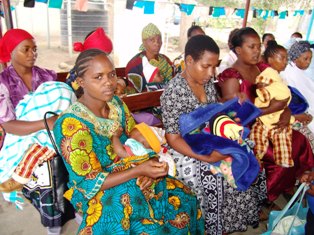 EDUCATION OF THE GUSII /KISII PEOPLE OF KENYA
EDUCATION OF THE GUSII /KISII PEOPLE OF KENYAEducation is in high demand. There are about 200 high schools, the majority of which are community-supported. There are also a number of private schools. Unfortunately, high school is too expensive for many families.
Although primary schools are free, there are other costs, such as books, building fees, and so forth. By the 1980s, fewer than 50 percent of all Gusii children attended secondary school, but all Gusii children attended primary school.
CULTURAL HERITAGE OF THE GUSII /KISII PEOPLE OF KENYA
Older people know many traditional songs. The favorite instrument is the obokhano (lyre).
EMPLOYMENT OF THE GUSII /KISII PEOPLE OF KENYA
A high population density has forced the Gusii to utilize all available space for agriculture, and families today are unable to produce enough to feed themselves. In part because of this, many Gusii are engaged in non-agricultural employment, either locally or in the large urban centers.
Farmers use iron hoes and ox-drawn plows. Farmers still keep cattle (both local zebu and European types), goats, sheep, and chickens. Maize (corn), cassava, pigeon peas, onions, bananas, potatoes, and tomatoes are important commercial crops. By the 1950s Gusiiland had become established as a producer of coffee and tea.
In the late nineteenth century, women were primarily responsible for cultivation, food preparation, and housecleaning. Men were concerned with warfare, house-and fence-building, clearing new fields, and herding.
Although women performed most of the cultivation, men participated much more than they do today. As men have withdrawn from cultivation, women must perform most of their traditional tasks in addition to many of the men's former tasks.
Women do most of the work to feed their families, and many husbands drink and visit friends while their wives work in the fields and take care of the households.
SPORTS OF THE GUSII /KISII PEOPLE OF KENYA
Wrestling used to be a popular sport for men, but it has declined in recent years. Various Western athletic activities have been introduced. The most popular sport among boys is soccer, and most schools have a soccer field. Other sports include table tennis, netball (similar to basketball), and cycling.
RECREATION
Traditional dancing and music were once popular, but today few outlets exist in the countryside for such entertainment. Among men, a main form of recreation consists of drinking beer.
CRAFTS AND HOBBIES OF THE GUSII /KISII PEOPLE OF KENYA
In pre-colonial Gusiiland, a variety of goods were manufactured: iron tools, weapons, decorations, wooden implements, small baskets for porridge, and poisons. Pottery-making was limited, and most pottery was made by the Luo people and imported.
The most technically complex and valuable items manufactured were iron implements, made from smelting locally obtained ore. Smithing was reserved for men, and blacksmiths became wealthy and influential.
Gusii soapstone carvings have become internationally recognized. The stone is mined and carved in Tabaka, South Mugirango, where several families specialize in this art. The craft is bringing a sizable income to the area through the tourist trade.
SOCIAL PROBLEMS OF THE GUSII /KISII PEOPLE OF KENYA
Alcoholism and violence toward women are the most severe social problems. Traditionally, only older people were allowed to drink large amounts of locally brewed beer (amarua).
Today, social control over drinking has broken down, and traditional beer and home-distilled spirits are served in huts all over the district. Probably close to 50 percent of young and middle-aged Gusii are regular drinkers, with a larger proportion of men than women.
This heavy drinking leads to violence, neglect of children, and poverty. The Gusii also have high murder rates compared to the rest of Kenya. Although violence toward women (such as rape and beatings) has been part of Gusii culture since earlier in this century, alcohol is probably a factor in its increase.
The exploitation of women in Gusii society is a serious human rights problem. According to customary law, which is usually followed in the countryside, women cannot inherit or own land, cattle, or other resources.
This makes them completely dependent on men for survival and attainment of any future security. Until a woman has adult sons, she is under the authority of her husband and has to ask permission from him to leave the homestead.
In addition, the Gusii practice female genital mutilation, which is practiced regularly even though it is prohibited by law. Sometimes called female circumcision, this surgery robs girls of the possibility for sexual satisfaction.
The practice is intended to keep girls and women "in line," and it has attracted the attention of human rights advocates around the world.
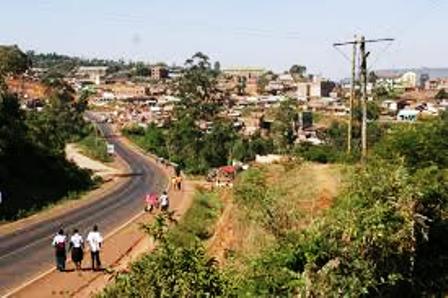
More about Afican Culture
Kenya Culture |
Akamba |
British Colonialists |
Crafts |
Cultural Business Meetings |
Cultural Communication |
Cultural Eye Contact |
Cultural Gestures |
Gift Giving |
Cultural Law |
Cultural Music |
Cultural Space |
Cultural Time |
How to Talk in Kenya |
Recent Articles
-
Garam Masala Appetizers ,How to Make Garam Masala,Kenya Cuisines
Sep 21, 14 03:38 PM
Garam Masala Appetizers are originally Indian food but of recent, many Kenyans use it. Therefore, on this site, we will guide you on how to make it easily. -
The Details of the Baruuli-Banyara People and their Culture in Uganda
Sep 03, 14 12:32 AM
The Baruuli-Banyala are a people of Central Uganda who generally live near the Nile River-Lake Kyoga basin. -
Guide to Nubi People and their Culture in Kenya and Uganda
Sep 03, 14 12:24 AM
The Nubians consist of seven non-Arab Muslim tribes which originated in the Nubia region, an area between Aswan in southern
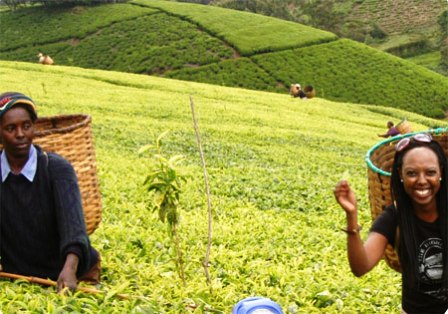
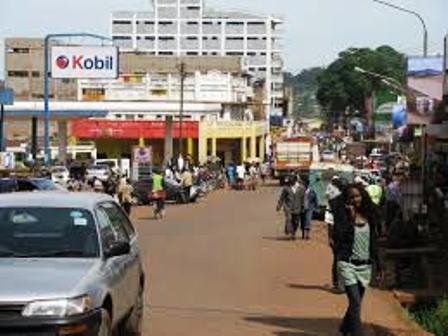
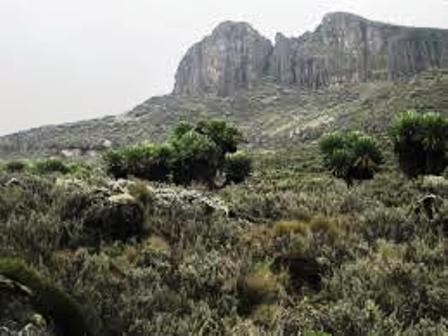
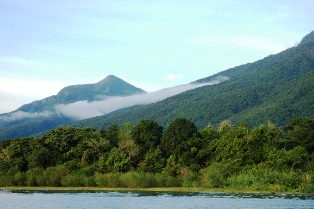
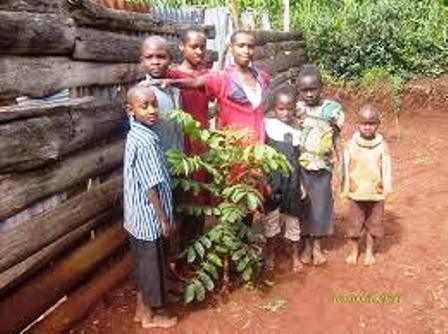
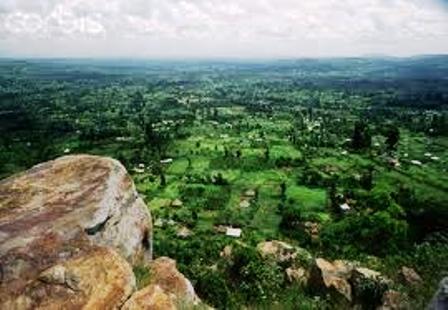
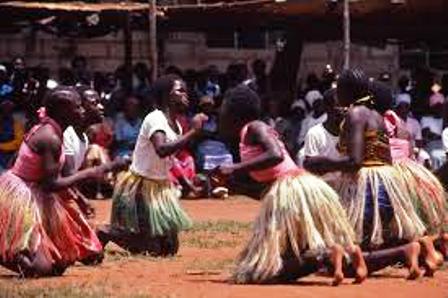
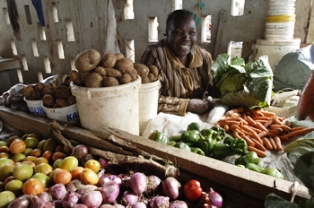
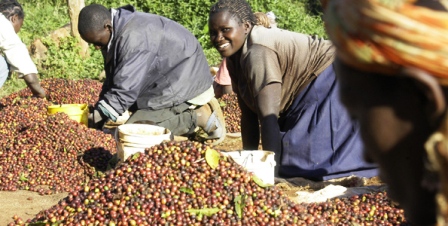
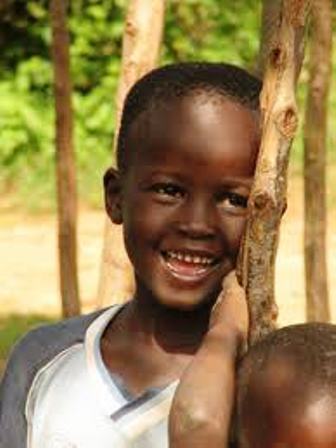
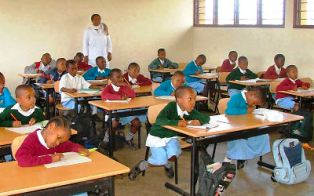







New! Comments
Have your say about what you just read! Leave me a comment in the box below.